This post may contain affiliate links. Please read our disclosure policy. As an Amazon Associate, I earn from qualifying purchases.
Whole baked salmon: minimal effort, maximum wow. No filleting, no fuss. Just juicy, flaky fish infused with lemon, herbs, and garlic. Brine it if you feel fancy, but honestly? It doesn’t need the extra help.
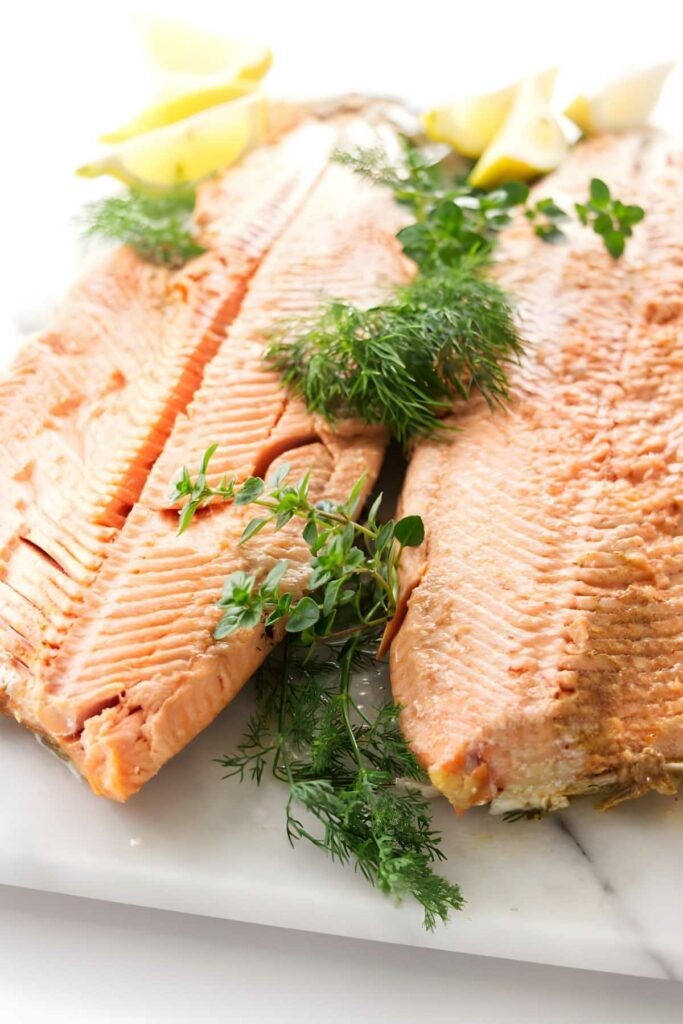
Here’s Why This Whole Baked Salmon Recipe Works
Looks gourmet, cooks itself: Whole salmon brings the drama without the work. Stuff, season, bake, done.
Brine for flavor insurance: It seasons deeply and locks in moisture, but it’s optional if you’re short on time.
Skip the butchering: Cook it whole, then lift off fillets like a pro. No slicing drama required.
Stuff it your way: Fennel, lemon, herbs, garlic, load it up or switch it out. The filling’s flexible.
If you like cooking whole fish, try our whole rainbow trout recipe.
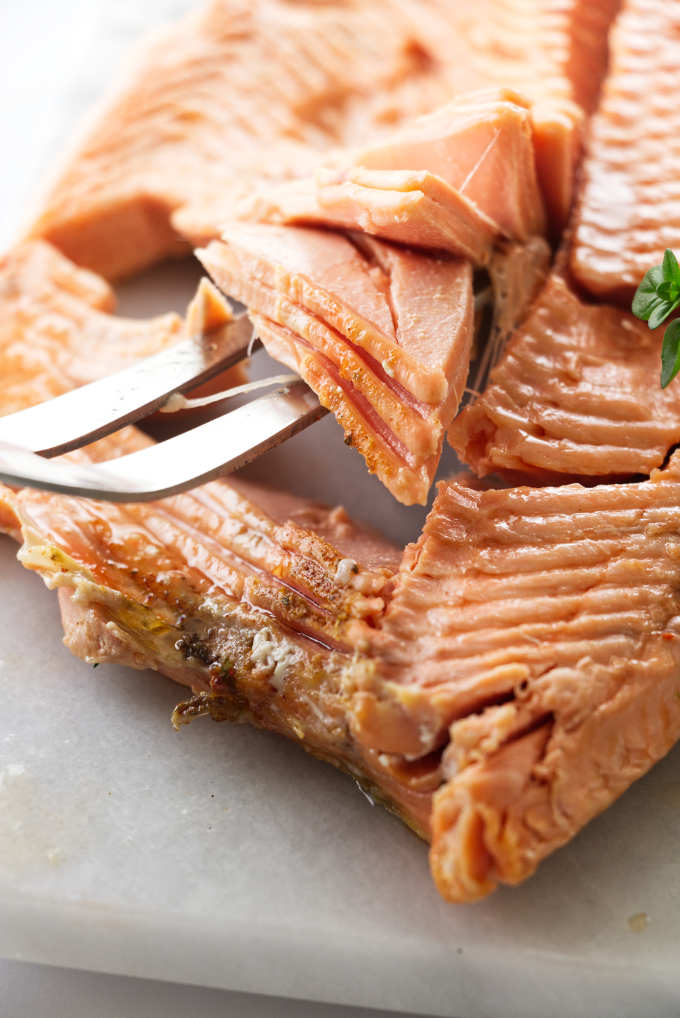
Recipe Tips
Pat it dry: Damp skin = steamed skin. Blot it well so it roasts, not sweats.
Use a thermometer: Aim for 122°F to 130°F for tender, just-set salmon. Skip 145°F unless you like it dry.
Pack the cavity: Don’t be shy, cram in those herbs, lemons, and garlic. Big flavor starts inside.
Let it rest: Five minutes gives the juices time to settle, and makes peeling off the skin a breeze.
Oil the foil (or parchment): A quick swipe of oil keeps the skin from welding itself to the pan.
Watch the thickness: Thicker fish = longer bake time. Don’t rely on the clock. Check the internal temp instead.
Peel off skin after baking (if you want): It slips off easily once the fish is cooked, no scraping needed.
Use a fish spatula: If you’re serving fillets intact, this is your best tool for a clean lift.
Temperature Chart for Salmon Doneness
| Salmon Doneness | Internal Temperature |
|---|---|
| Rare (soft, buttery, juicy) | 110°F |
| Medium rare (tender, flaky, moist) | 125°F |
| Medium (flaky, firm, still has moisture) | 130°F |
| Medium-well (dry, firm) | 140°F |
| Well-done (dry and tough) | 145°F |
For another salmon recipe with bold flavor, check out our Bourbon Glazed Salmon Fillet.
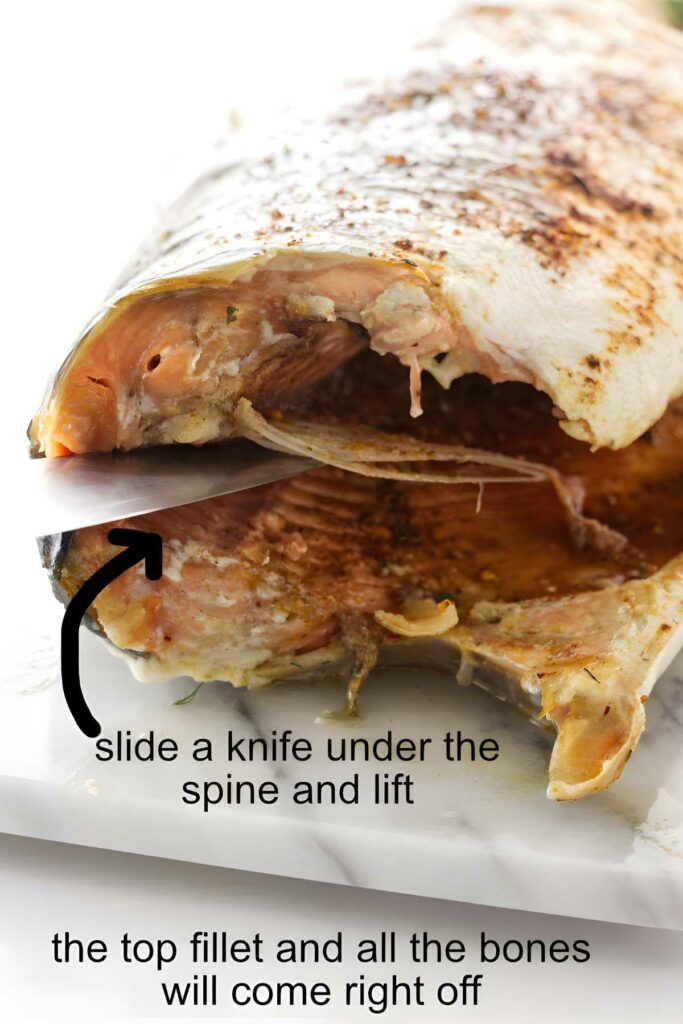
Baking a Whole Salmon
This baked whole salmon delivers big flavor with barely any effort. Brined or not, the result is tender, well-seasoned fish that lifts off the bone like butter. It’s unfussy, impressive, and easy enough to pull off on a Tuesday.
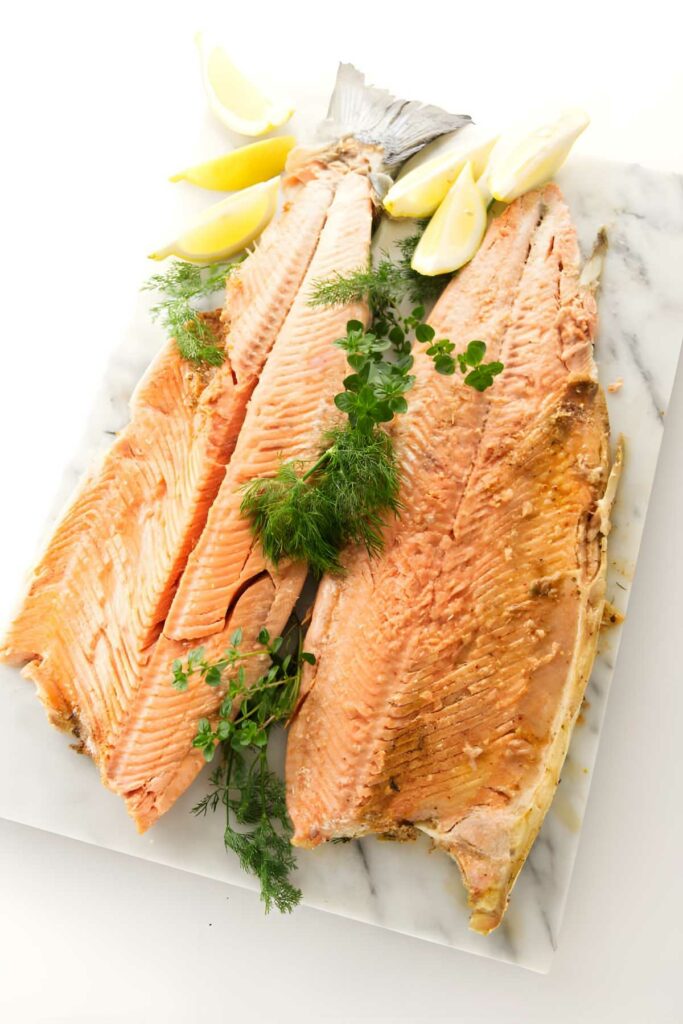
This is a great way to serve a crowd and leftovers are easy to make use of. Toss some tender salmon with greens and make this Salmon Caesar Salad or our Salmon Salad with Strawberries.
Pin this now to find it later!
Pin It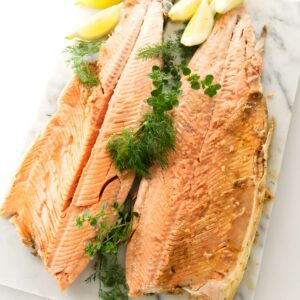
Baked Whole Salmon
If you make this recipe, please leave a star rating and comment.
Ingredients
For the Brine (optional)
- 4 quarts cold water, see notes
- 1 cup Kosher salt
- ½ cup brown sugar
For the Baked Salmon
- 1 whole salmon, 3 to 5 pounds
- 2 to 3 tablespoons olive oil
- 2 tablespoons seasoning salt
- 1 onion, thinly sliced
- 1 fennel bulb, thinly sliced or shaved with a veggie peeler
- 8 to 10 garlic cloves, thinly sliced
- 2 lemons, thinly sliced
- fresh parsley
- Fresh dill
- Fresh thyme
Instructions
Brine the Salmon (optional)
- Combine the sugar, salt, and 3 to 4 cups of water in a saucepan. Bring to a simmer and stir until the salt dissolves. Cool the solution down by tossing in a couple of cups of ice cubes. Pour the solution into a container large enough to hold the salmon. Pour in the rest of the water.
- Place the salmon in the brining solution. Cover and place in the fridge for 6 to 8 hours (Make sure the brine covers the salmon. If it doesn’t, make some additional brine solution).
Bake the Salmon
- Preheat the oven to 425°F and pat the salmon dry with paper towels. Place the salmon on a baking sheet lined with parchment paper.
- Brush olive oil on the outside and in the cavity of the salmon then sprinkle it generously with seasoning salt. Stuff the cavity with slices of onion, fennel, garlic, lemon, and several sprigs of the herbs.
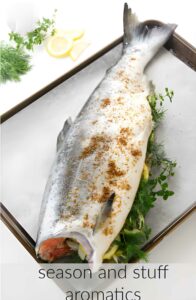
- Transfer to the oven and bake for 20 to 30 minutes or until a meat thermometer registers 130°F (or 122°F for rare salmon, see notes).
Serve the salmon
- Place the salmon on a wide platter. Pull up on the skin. It will peel off very easily.
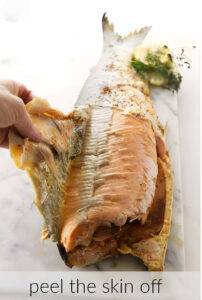
- Starting at the head end, lift up on the spine with a wide spatula or knife. The top fillet and the spine will peel off of the lower fillet. (See the photos in the post for reference). Flip the top fillet over so the spine is on top. Pull the spine off the top fillet. Use the spatula to hold the flesh down under the spine.
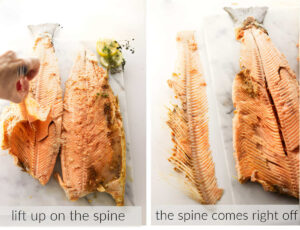
- Season the salmon with salt and pepper and serve.
Notes
Nutrition
Nutrition information is automatically calculated, so should only be used as an approximation.
 Like this recipe? Rate & comment below!
Like this recipe? Rate & comment below!
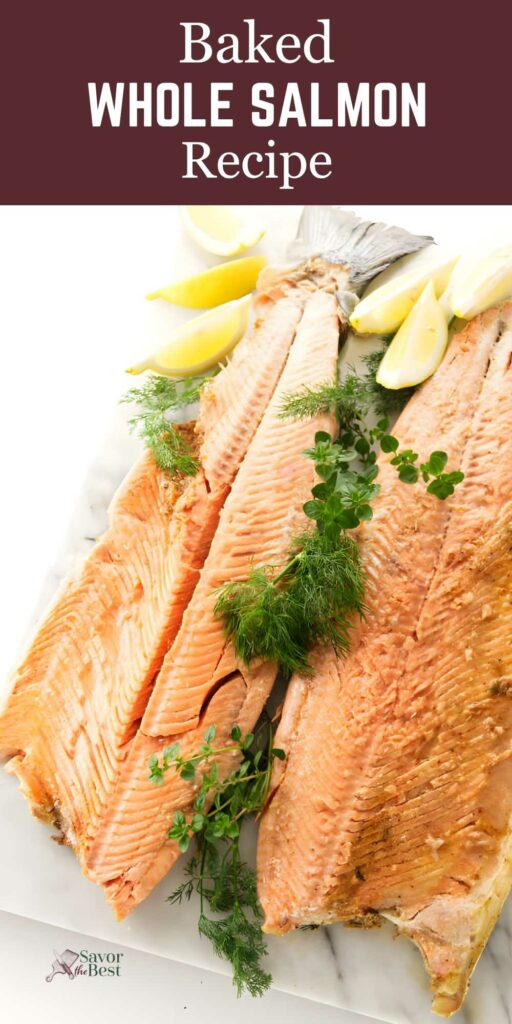
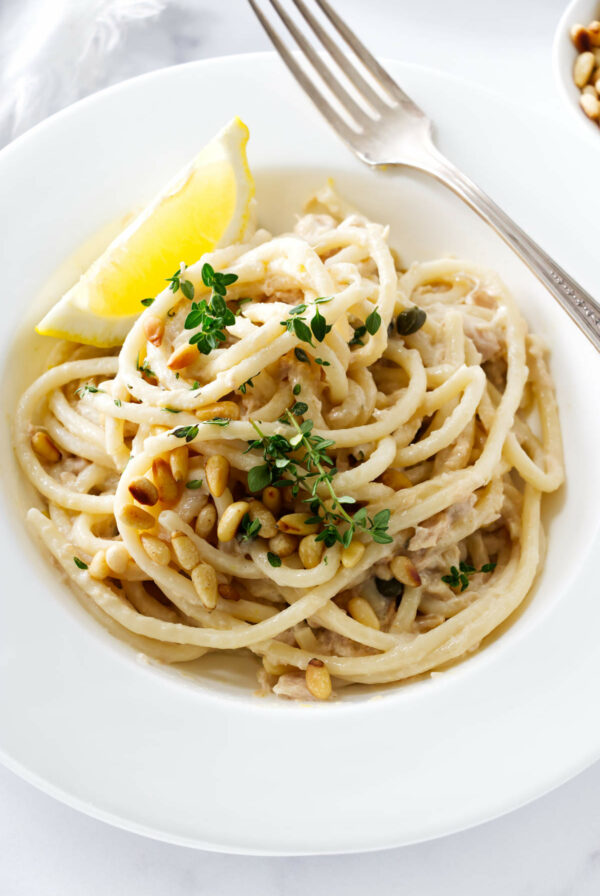
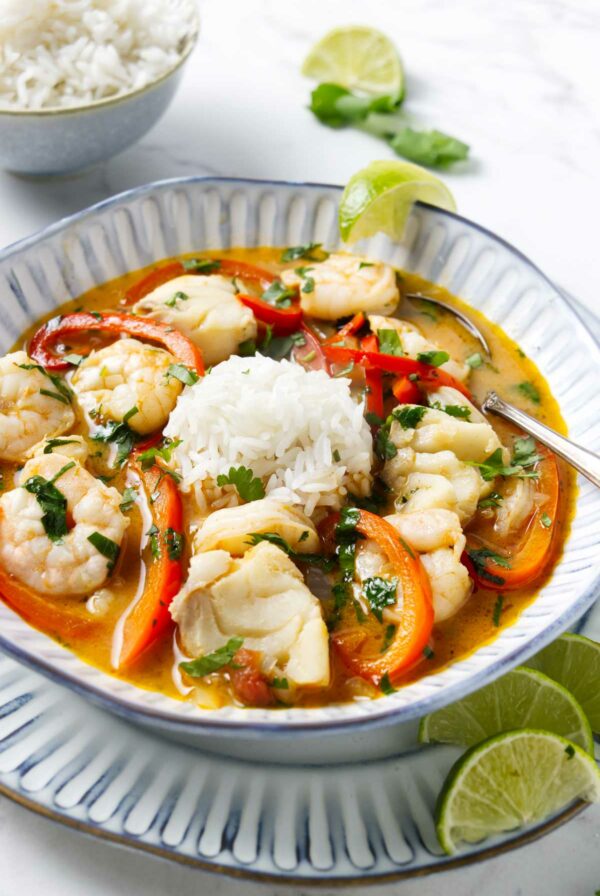
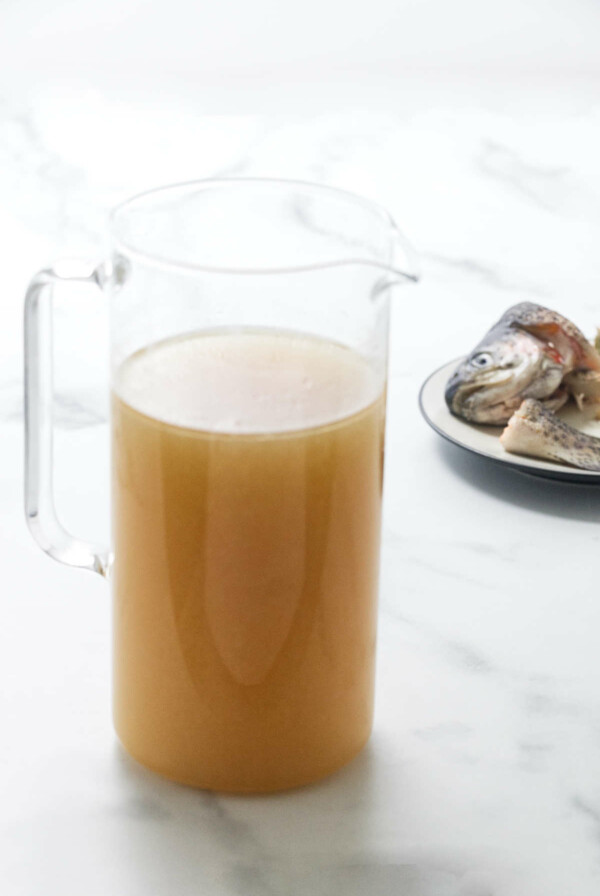
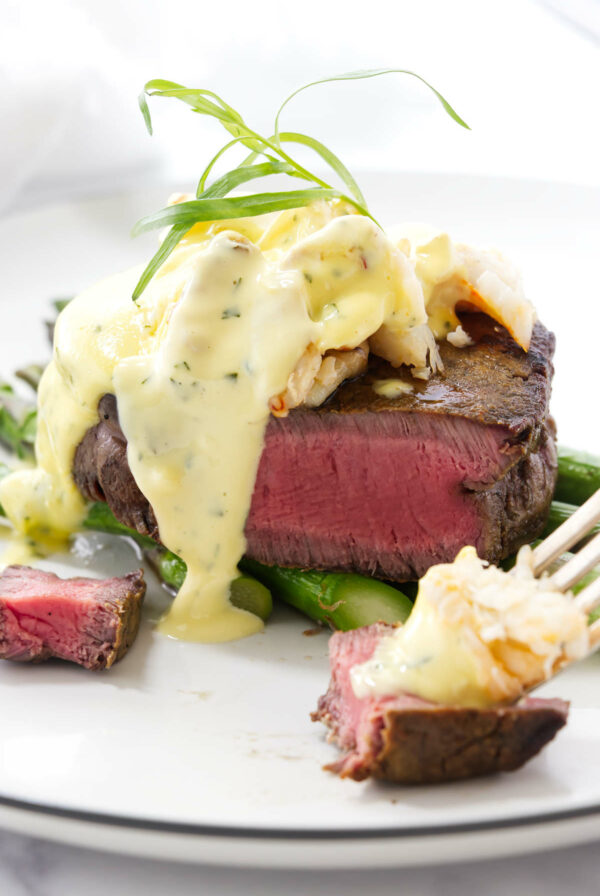










In the ingredients for the brine it says 3-4 quarts of water. I’m the instructions it says 3-4 cups of water. Trying to figure out which is correct. 🤔
Just use 3 to 4 cups of water to heat on the stove and dissolve the salt then add the rest of the water to the hot water. That way it will cool the hot water down quickly.
What exactly is ‘seafood seasoning salt’ and is there an alternate or substitute?!?
Looking forward to trying this! ?
Seafood seasoning is an all-purpose seasoning that has a blend of spices that goes particularly well with seafood. You can just use salt and pepper if you don’t have a seafood blend. I linked to a couple of seafood blends at the bottom of the recipe card for reference.
Very very delicious! One of my favourite part is the head 🙂
Thanks Angie